Form and content – two levels of change
« Previous Page | 1 2 3 4 5 6 7 8 9 | View All | Next Page »
Form and Content
Understanding change is a very difficult task. No aspect of our world, either experienced outwardly through our senses or inwardly through our feelings and thoughts, seems exempt from the paradoxical rule that the only constant is change. It is possible to examine the way change occurs at many levels. At the “lowest” level of examining change, we generally tend to focus on what can be called the “content.” The particular identified content (we’ll see in a minute why it is important to note that this content is “identified”) depends upon the arena in which the transformation is being studied. Generally, however, the content is the “thing” that is undergoing change, and is usually the overt focus of our attention. For example, in a chemical situation, the content would be the physical elements, such as hydrogen and oxygen in electrolysis. In a therapeutic setting, the “thing” might be one’s thoughts and feelings (in psychology), one’s bones (in chiropractics), or a family system (in family therapy).
The content level is always present; it is always a part of the way that we encounter change. Yet in addition to looking at the content-level, we can also examine change in a different way: we can examine patterns of change. That is, we can place our attention on the way that changes in content unfold, and seek to identify similarities and differences in such patterns in order to get a deeper understanding of the “rules” that inform what happens at the content level. Paying attention to this level of change is paying attention to the process of change, rather than just its results.
This way of examining change takes place one level removed from the content level, and can thus be understood as a “higher” level. It is more abstract than the first, and because it provides the contextual rules that inform the unfolding of the processes as they appear at the content level, we can call this second level that of “Form”, or even better, “Forming”. This is spelled with a capital “F” to distinguish it from “form”, in the sense of a static outer shape or configuration. A given quadrilateral has a definite individual form, and there are an infinite number of quadrilaterals, such as the square and trapezoid. But every possible quadrilateral shares the same Form. This is the same relation between a set and an element in formal logic. The Form is a way of indicating patterns of becoming shared by forms.
When examining the facts of change, we are talking about the content level; when examining the how of change (the process), we are talking about the Form(ing) level. In daily life, it is usually much easier to become aware of the content level than the Form level; we must actually practice to become awake to the context and patterns that operate on the level of Form. There is an important reason for this, but it takes a little unraveling, having to do with thinking and feeling.
Thinking and Thoughts
Thinking is a capacity, a process, a kind of activity. Thoughts are the content of thinking, the ideas that get formed by thinking. They fall out of the process of thinking as separable mental bits, and don’t like to change. Said somewhat cryptically but exactly: thoughts are what they are because they are not something else. The thought “4” is not the thought “telephone”, they are experienced directly as distinct from each other by virtue of their content. This illuminates something which is obvious when pointed out: the nature of a thought is to be different. Thoughts embody difference. The difference is not incidental to the thought, but constitutes its very nature. Whatever a thought is, it is by virtue of this difference. This may seem trivial or obvious, but the importance of this triviality is often overlooked and bears deeper scrutiny, as it forms a key piece of the puzzle for anyone interested in working with change in a wise manner. It indicates that thoughts don’t change by themselves, but need thinking to change; they are not intrinsically malleable like the process of thinking itself.
A perfect analogy for this has been long known in alchemy, where thoughts are to thinking as a precipitate is to its solution. Thoughts precipitate like crystals out of the process of thinking, which is more fluid and flexible. This general relationship between lower and higher orders is a leitmotif in alchemy, the central goal of which is exploration and implementation of this relation in technically wise ways. In alchemy this is spoken of in terms of the Above and Below, or Heaven and Earth.
So: thoughts are a lower order expression of thinking, a bearing out, a fulfillment, a drawing forth, a settling, even a dying of thinking. Thinking is a higher order activity at work in all thoughts, their source, context, womb, genesis, and potential. Thoughts actualize thinking; thinking potentializes thoughts.
Your Brain Is Not Your Liver
It is easier to be aware of the content level in a given circumstance because we give such a large portion of our attention to our thoughts, but not to the thinking activity that produced them. Thoughts, as the embodiment of difference, act as a natural attractor for our attention, which is keyed to difference in general. This principle is even embedded systemically into our very physiology: all our senses are built on maximizing differences. Our visual sense, for example, relies upon specialized areas of the brain devoted to detecting specific types of difference, such as contrast or movement. But the principle is even more general; the very functioning of the nervous system as a whole can be described as the integrated control of depolarization waves (differences traveling through the axons of the nerves).
It is accurate to say that in general, the nervous system (the basis of thinking physiologically) is more keyed to differences than other aspects of our physiology. A smaller difference in the nervous system can have a greater effect (a greater difference) than a similarly scaled difference in the rhythmic or metabolic systems. This is why we can pinpoint the relationship between smaller and smaller areas of the brain and specific experiences, even to individual neurons. Think of the activity of the liver for contrast: this organ is so resilient that it can still function if half of its tissue is gone, and can regenerate itself fully given time. Indeed this is regularly practiced in live-donor liver transplants. But the brain is so specialized (attuned to difference) that a corresponding transplant of the brain would result in catastrophe.
Untangling Form and Content
The main point here is that our attention is naturally attracted to areas of difference, and as thoughts are embodiments of difference, thoughts take up the majority of our wakeful attention. This means that in general we are more likely to pay attention to the content level than the form level of a given circumstance. In the realm of cognition, the content level is carried by thoughts, while the Form level is at work in thinking, but the difference between content and Form is more general and applies in many other realms.
For this reason, when we don’t make the distinction between content and Form when looking at change, we can easily get confused. This is in part because we carry around various assumptions that, while they may make sense at one level, don’t make sense in the other. In other words, mixing these two levels together when either thinking about or trying to implement change can create and perpetuate misunderstandings, and even exacerbate existing problems. Because it is difficult to be aware of the Formative aspects of a situation, we often carry a vague sense of what is occurring at this level. A common mistake is that we will attempt to solidify the vague feeling by pinning it to something obvious at the content level. This results in a plethora of opportunities for miscommunication.
For example, a recent study (Psychological Assessment, 2010, Vol. 22, No. 2, 288–297) showed that while arguments between married couples had a huge variety of overt sources at the content level (for example, “he forgot to pick up the kids”, or “she criticized my driving”), at the level of Form a common, identifiable pattern could be discerned: one or both partners felt either threatened or neglected. In most arguments the pattern itself (“I feel neglected” or “I feel threatened”) remains implicit and unspoken. When couples’ interactions focus solely on the content level and the level of Form is not explicitly acknowledged, resolutions to the present conflict (“he promises to use his calendar to remember his appointments”, “she will withhold her criticism unless real danger is immanent”) don’t generally prevent the arising of similar conflicts (around different content) in the future. To avoid the pattern of such conflict, it is important to be able to address not just the lower order content, but also the higher order Form(ing). The higher order Forms are the patterns that carry forward the contexts out of which the lower order content precipitates. In this example, what is called for is some attention to the issue at a higher level: the feelings of threat or neglect.
Perhaps this distinction between content and form seems obvious. It may be so when pointed out, but it requires some significant effort to get into the habit of making this distinction–and what’s more important, making the distinction at the appropriate time. And even then, making the distinction is only the first step; we must be able to act differently upon the basis of the perceptions that are possible once the distinction has been made. It is not enough to simply be aware of the pattern; indeed there is a danger that this can exacerbate the issue. The crux of the issue about change revolves not around having some new knowledge (about higher order processes), but about learning to know differently, to actually change the higher order processes themselves.
Context as Higher Order
Now let me point out something else that might seem obvious: every change is a transformation. This means that what IS always has some relationship to what WAS. Even the most random of physical processes are constrained in some way by the particularities of its context. This is an important point to grasp: transformation always occurs within a larger context, which simultaneously provides both limits and possibilities for the unfolding process. Take some arbitrary system A, embedded within the larger context C. Because whether A transforms into B, D, or E is limited by the particular nature of C, we can say that the context C has some primacy with respect to the process P by which A transforms. We could say that the context C is of higher order than the particular process P, or that the process P unfolds the nature of higher order processes that constitute context C.
This way of speaking about transformation is abstract on purpose; it allows us to focus on the patterns of transformation rather than the particular content of A, B, D, and so forth, and it is a language that has been developed in the field known as cybernetics. As Bradford Keeney, a important figure in bringing epistemological aspects of cybernetics to light, indicates: “Cybernetics is principally concerned with changing our conceptual lens from material to pattern” (Keeney, 1983, p.95). By focusing on pattern, in addition to form, we expand our ability to perceive and to know. Now at this point you may think to yourself: “But you can’t just get rid of the content — it matters!” Yes, it does matter, but the important question to consider is how it matters, not that it matters. This is where we take the next step.
Cybernetic Epistemology
Remember that above I mentioned that it was important to note that the particular content for any situation was identified? The reason this is important is surprisingly deep, and points to something very profound about ourselves, and it is this: all knowing follows an act of distinction. The profundity of this seemingly innocuous statement will require some elaboration., which will take us on a little detour into the strange metadiscipline called second-order cybernetics (the cybernetics of cybernetics), also known as cybernetic epistemology.
Cybernetic epistemology is a form of epistemology (the study of how we know, the structure of knowledge, its limits and genesis) that takes to heart the fundamental (first-order) cybernetic principle of recursion. We’ll need to understand recursion in order to see what’s happening with the relationship between distinction and knowing.
At its most basic level, recursion is a form of looping that has the quality of being self-referential. Mathematically, recursion is easy to understand: it describes a process whereby the output of a given formula is used as the input for the same formula. Each time the equation is “run” it produces an answer that is based upon the previous answer to the last “run”. The process of running through the equation multiple times is called “iteration”. In mathematics-speak, this type of equation is known as a recurrence relation.
Fibonacci, Content, and Form
The well-known Fibonacci sequence $latex (0,1,1,2,3,5,8\dots)&s=-1$ is produced by an iterated (recursive) equation that describes a fundamental property of a vast array of natural forms, from the construction of your own body to sunflowers, to galaxies. Or perhaps you’ve heard of the Mandelbrot set, an almost infinitely complex fractal form created by iterating and then graphing the complex recursive equation $latex z_{n+1} = z_n^2 + c&s=-1$.
As indicated above, it is important to distinguish between the content and the Form when thinking about change, and the Fibonacci sequence provides an excellent demonstration of why this is so. The content of the Fibonacci sequence $latex (0,1,1,2,3,5,8\dots)&s=-1$ is a series of numbers produced by the equation $latex F_n = F_{n-1} + F_{n-2}&s=-1$. The equation provides the Form by which the content is produced; the only thing that needs to be “given” from outside the system are the first two numbers (0 and 1) to get the equation going, and then the rest of the infinite sequence flows out naturally. This may seem all well and good, but something amazing is happening here, just below the surface, and understanding it will help you get a sense for the profound difference between the level of content and the level of Form.
If you take any two adjacent numbers in the Fibonacci sequence and divide the second number by the first number, you will get what is known as a ratio, a new number that encapsulates a particular kind of difference between two quantities. What is amazing about the Fibonacci sequence is that if you take the ratio between any two successive numbers in the sequence, you will find that the ratio tends towards a very specific number: $latex 0.6180339887\dots&s=-1$ . This number, which has an infinite amount of non-repeating numbers after the decimal point, is known as the phi ratio or the golden ratio, and it is a number that is behind the creation of countless forms in nature. The golden ration is a second order process, a Form, that acts as a context through which an infinite number of lower order forms can be generated. It is a pattern that connects those forms.
But the important part for our consideration is the following: it doesn’t matter what initial numbers you start with. You can take any two numbers (including complex numbers involving i) as the first two numbers of the recursion; they all tend towards the golden ratio. This is a perfect example of the difference between content and Form. On the one hand, the content has an independence from the Form, as no matter what numbers you start with, placing them in the context of the Fibonacci relation tends toward the golden ratio (the golden ratio is technically the “limit” of the process). On the other hand, the content is quite directly dependent upon the Form, as each successive iteration is determined it.
This polarity reveals a very important principle that makes a big difference when thinking about change: where exactly you begin matters less than how you proceed. The emphasis here is on the how: the Form, the context, the pattern, the second order relations.
Recursive Connections
Identifying the difference between Form and content is only a first step to understanding the deeper nature of change. We must consider that recursion between levels plays a very key role in the way change unfolds. This is something that is somewhat difficult to grasp because of its abstract nature, but when you “get it” you’ll start to see this principle operating everywhere.
Recursion occurs when some difference within a system propagates through the system in a way that affects the process by which the original difference was created. At the lowest level, a recursive system is self-directive (hence the term “cybernetics,” from the Greek for “the art of steering,” refers to the modern study of recursive systems). This is because a system’s next “move” is dependent upon feedback loops that carry forward differences inherent in its current state. This is the first half of recursion: how things are now changes how things will (and can) be. The second half of the recursion is that how things will be also changes how things are now. I state it this way to make the paradoxical nature of recursive systems unavoidable from the beginning. We’ll return to this later.
There are many types of recursive systems. On the simpler side of things, we have already seen that even a mathematical formula can be recursive. Many physical technologies rely upon recursive connections. Global climate, for example, is a massively recursive system, with many nested and interweaving layers of activity, each of which dynamically affects others through from sea currents to air temperatures to local weather. But there are plenty of mathematical formulas and physical systems that are not recursive as well. On the more complex side of things, however, all life, from the simplest single-celled organism on up, is recursive. In a very direct way, life itself can be illuminated through precisely its endlessly diverse embodiments of the principle of recursion. Within the domain of living beings recursion is integral to the bringing forth of ever more complex forms and potentials. Plants operate recursively, but animals exhibit a greater range, complexity, and diversity of recursive interactions. Human beings are even more recursively complex. In human beings recursivity is exemplified not just in terms of physiology, but also in terms of what is possible for us epistemologically. This is true unconsciously for animals, who have their own kind of knowing that is self-directed (and the animal kingdom as a whole exhibits a very wide range of types and levels of self-direction). Humans are unique in that not only is our epistemology open to self-direction, we can become conscious of this self direction itself, and thus add another, higher level of recursion into the mix.
This difference is vital to understanding and working with change in new ways. We are already self-directed, recursively operating beings. With respect to how we know, for the most part these self-directed processes take place by virtue of parts of ourselves that we are not consciously attentive to, or are only attentive to in very select moments. What this means is that to the extent that the recursive relation between our current state and our next move remains determined by primarily unconscious or semi-conscious processes, we are literally slaves to ourselves.
Meditation
What is amazing is that human beings have the capacity become awake to just those unconscious and semi-conscious processes that influence who we are and how we know (ourselves and the world). As already stated, awareness is not enough by itself, and can even be detrimental (this plays a very important role in addiction). Nevertheless, the importance of awareness of the recursive links between our epistemological processes and the worlds they reveal to us cannot be underestimated.
Humans have been developing techniques designed to bring attention to this dynamic in a higher-order way for thousands of years. The archetype for the technique is meditation. Meditation can be thought of as a second order process par excellence, because it is meant specifically to move attention in a recursive loop: it is a throwing back of attention onto itself, rather than onto the content of attention that normally takes up our waking moments. Repeated direction of attention to attention is the primary way through which we can become aware of the way that our attention is (self-)constructed. Essentially, meditation offers a higher order doorway out of (into/through) the maze of unconscious and semi-conscious epistemological patterns that normally steer us through our days.
The field of cybernetic epistemology is the study of recursive patterns of knowing, and is an arena ripe for more overt connection to the realms of human self-direction that have been practiced for millennia in diverse ways across the globe, and which are still under continual evolution and development. Cybernetic epistemology, with is unique conceptual tools and background, can bring a kind of theoretical clarity to the very complex and difficult task of understanding how change happens. It is interested in the patterns of change, and the patterns of the patterns. Much work remains to be done to develop and explore the fruitful connections between the abstractions of cybernetic epistemology and the experimental, embodied, and lived diversity encountered by people who have an interest in understanding and working with change in wise and integral ways.
This essay is only meant to point out a central piece of this work: recognition of the difference between the level of Form and the level of content in recursive systems, and how that difference can make a difference with respect to thinking about change.
« Previous Page | 1 2 3 4 5 6 7 8 9 | View All | Next Page »


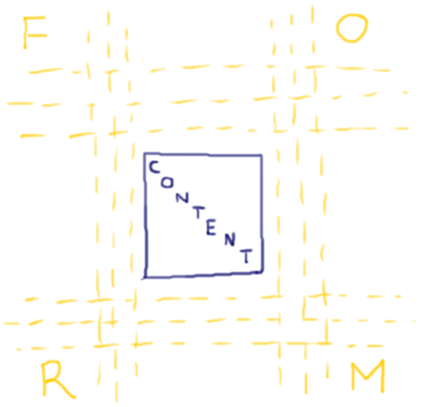
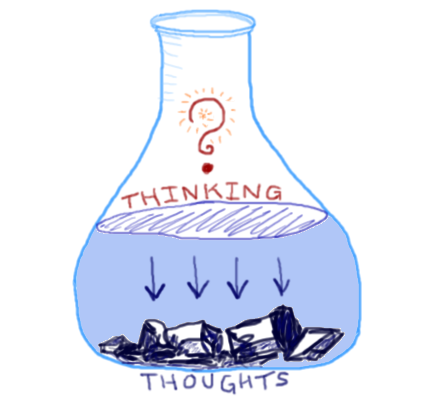
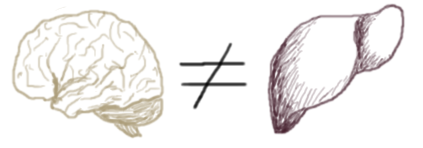
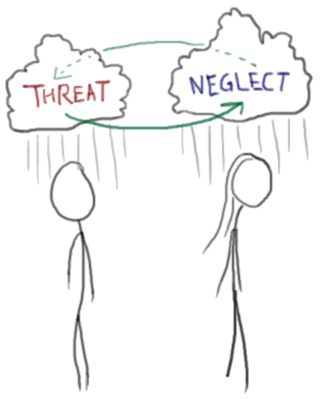
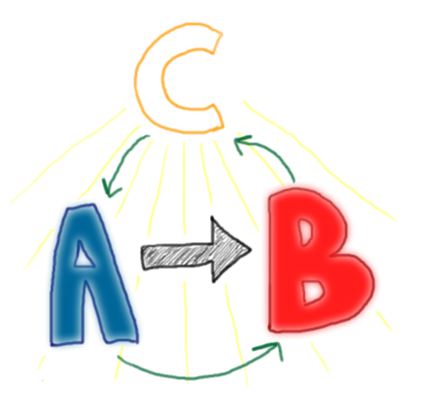
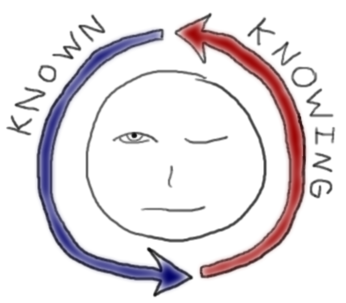
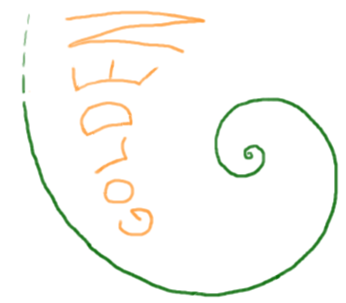
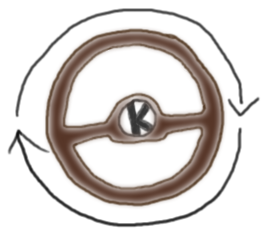
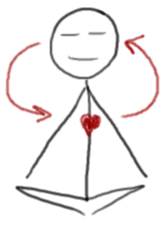



Firstly, my sympathies.Secondly, maybe a lttile hope. As you know I plunged in to this world of “EdTech” rather late – and it’s been my observation that most of the people writing about EdTech are no longer writing about EdTech at all. The interesting ones are writing about culture, society and life. EdTech is just an increasingly bare frame to hang more interesting ideas on. The interesting folks add insight, the duller ones platitudes and clunking rhetoric but the framework is no longer important. With your brain and your cross-disciplinary magpie-ism you could find a home in any academic discipline. Of that I am sure.